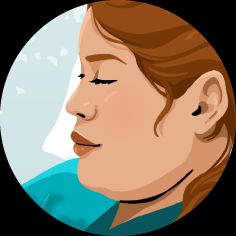There’s no cure for this condition that causes excessive daytime sleepiness. But treatments can help improve symptoms — and for some, the condition may go away entirely.
The term “idiopathic” is used to describe a disease where the cause is unknown.
“Hypersomnia” refers to excessive daytime sleepiness. Much of the general population experience this due to lifestyle and sleep deprivation. Hypersomnia is also a symptom of many diseases, such as sleep apnea or narcolepsy. It can even be a side effect of some medications.
Idiopathic hypersomnia (IH) is a rare central nervous system disorder of excessive daytime sleepiness whose cause is unknown. People who have the condition are always sleepy, and some may sleep over 11 hours out of 24. When they awaken from nighttime sleep or a nap, they’re still groggy and often irritable. Sleeping is not refreshing to them.
The disorder is sometimes confused with narcolepsy. But people with IH do not have the following symptoms that are common in narcolepsy: cataplexy, sleep paralysis, hallucinations on falling asleep and waking up, and disrupted nighttime sleep.
An IH diagnosis is made by clinical features and sleep laboratory testing. On long-term follow-up,
For about 25% of people originally diagnosed with IH, another condition eventually crops up to explain their severe daytime sleepiness. In that case, their hypersomnia is no longer idiopathic.
People use the word “tired” to mean two different things: sleepy or fatigued. Fatigue might be the sensation that is present after vigorous exercise or focusing on a task (such as working on a computer).
In most cases, sleepiness is mitigated by… sleep. And normally, fatigue is mitigated by resting, which may or may not involve sleeping.
But people with idiopathic hypersomnia are always sleepy — and sleeping or resting doesn’t help. In fact, they might feel groggy or worse after a nap than before.
Idiopathic hypersomnia is a chronic condition.
In about a quarter of people who receive that diagnosis, another diagnosis is ultimately made that explains the sleepiness. This might be, for example, sleep apnea or a movement disorder or even a side effect of medication or depression.
In about one fifth of the cases of people who are diagnosed with idiopathic hypersomnia, the disorder remits or it simply goes away.
Excessive daytime sleepiness can be debilitating and interfere with many aspects of life — relationships, performance at work, operating motor vehicles or machinery, and the ability to enjoy life.
The first step is to discuss your symptoms with your doctor to determine the cause. You’ll probably then be referred to a sleep specialist who will likely evaluate you to make sure you don’t have a specific sleep disorder such as sleep apnea or narcolepsy. If no cause is found, the diagnosis of idiopathic hypersomnia is made.
If you do have IH, you’ll need help in managing the symptoms. It can help to avoid the use of sedating drugs, such as alcohol, antihistamines, and cannabis. You should also discuss what drugs you may be taking with your doctor.
You must also avoid operating a motor vehicle, machinery, or mission-critical work when sleepy. You may need accommodations from your workplace or school under the Americans with Disabilities Act.
Because it’s such a rare disorder, there wasn’t a single medication approved by the Food and Drug Administration (FDA) to treat idiopathic hypersomnia until 2021.
That’s when the
Oxybate is also known as gamma-hydroxybutyrate (GHB), a metabolite of the neurotransmitter GABA.
This medication can be taken once or twice a night.
However, IH treatment may also require consideration of off-label prescription of other medications, such as:
- modafinil
- pitolisant
- methylphenidate
- solriamfetol
Off-label use of medication may not be authorized by insurance. This can be a financial burden.
So, if you have idiopathic hypersomnia, check in periodically with your doctor to see if any new advances in treatment may help you.
Some people with idiopathic hypersomnia feel well-rested when treated. This, however, is difficult to predict.
Researchers continue to try to understand the condition and find new treatments.
But it’s important to keep in mind that, with the right steps, you can live a normal life with idiopathic hypersomnia.
Idiopathic hypersomnia is a very rare condition. You may never meet another person with it.
Ask your healthcare professional whether they treat anyone else with IH who might want to chat about their experience.
Other potential sources of information and support include the Hypersomnia Foundation and Project Sleep.
You might also be interested in participating in a clinical trial or attending a conference to connect with other people living with IH.
Dr. Meir Kryger is an ABMS board certified internal medicine physician specializing in pulmonary and sleep medicine. He is a professor of medicine at Yale University and is also a practicing physician at Yale Medicine. He is on the board of directors of the National Sleep Foundation in Washington, D.C.

